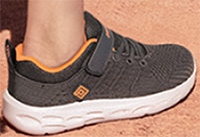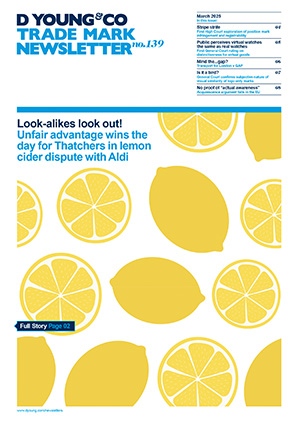It is all in the angles: Umbro wins its double diamond logo trade mark infringement appeal
The Court of Appeal found that the Dream Pairs’ sign was similar to Umbro’s double diamond logo, overturning the High Court’s decision that there was no likelihood of confusion.
Background
The appellant, Iconix Luxembourg Holdings SARL (owner of the Umbro brand), owns the trade mark registrations shown below for its double diamond logo covering clothing and footwear goods in class 25 (the Umbro Marks):


The respondent, Dream Pairs Europe Inc and Ors, started to sell its footwear online in the UK bearing the logo shown below (the sign):

Iconix sued Dream Pairs for trade mark infringement pursuant to section 10(2) Trade Marks Act 1994 (likelihood of confusion), and section 10(3) Trade Marks Act 1994 (unfair advantage of a mark with a reputation).
First instance
To summarise, the first instance judge concluded that Dream Pairs had not infringed the Umbro marks. The judge found that overall there was a low degree of similarity between the Umbro marks and the Dream Pairs sign, noting that the average consumer would view the sign as a tilted “P”, which is distinctive to the Umbro marks which are elongated sideways diamonds. When considering the context of the use, the judge noted that Dream Pairs sold its footwear on Amazon and the webpages made reference to Dream Pairs and not Umbro.
As a result of the low degree of similarity between the Umbro Marks and the Dream Pairs’ sign Iconix’s claim based on reputation also failed.
Related article
We provided our detailed analysis of the first instance decision in our article “Umbr-no: UK High Court finds Dream Pairs logo does not infringe Umbro trade marks”, published in May 2023.
Read moreThe appeal
The appeal was limited to the likelihood of confusion claim in relation to only the first of the two marks initially relied on at first instance. Iconix argued that the first instance judge did not correctly assess the similarity between the Umbro marks and the Dream Pairs sign and as result failed to correctly assess the likelihood of confusion, particularly in relation to post-sale confusion.
Iconix argued that the judge was wrong to say that the “P” like form in the middle of the Dream Pairs sign was the distinctive and dominant element of the sign. Arnold LJ agreed that the judge had made an error of principle by treating the sign as a composite sign, as opposed to considering the sign as a whole. As a result, this led to a material error in the assessment, whereby the judge had focused too much on the differences between the sign and the Umbro marks. Arnold LJ agreed with the judge’s similarity assessment in relation to the side-by-side comparison of the graphic images of the Dream Pairs sign and the Umbro marks. However, Arnold LJ did not think that the same similarity assessment was rationally supported when comparing the sign and the Umbro marks when affixed to footwear and viewed from different angles.
Turning to the likelihood of confusion assessment, Arnold LJ agreed that the judge had erred in principle when considering the post-sale context. The judge had fallen into the common trap of allowing his eye to be conditioned by the side-by-side comparison of the marks, and in particular the graphic images of the Umbro marks and the Dream Pairs sign. Further, the judge failed to take into account that a consumer would see the sign affixed to footwear looking down from head height at the feet of another person wearing the footwear so they would view the sign at an angle. In particular, Iconix relied on images of Dream Pairs’ shoes as worn by consumers, such as the below example, to show how the sign would appear in a post-sale context:

When viewing the sign from an angle (such as in the image shown above) Arnold LJ concluded that the sign would appear more like a double diamond, and so the sign was similar to the Umbro marks. Arnold LJ confirmed that there was nothing artificial or unrealistic about such a comparison.
The Court of Appeal therefore concluded that there was a likelihood of confusion and that Dream Pairs had infringed Iconix’s Umbro marks.
In short
This appeal decision confirms the importance of considering the context of use when assessing the likelihood of confusion. In particular, post-sale confusion must be considered from the point of view of the relevant consumer in real-life scenarios, and take into account that consumers will often not have an opportunity to view two signs in the form of graphic images side-by-side and face on.
Case details at a glance
Jurisdiction: England and Wales
Decision level: Court of Appeal
Parties: Iconix Luxembourg Holdings SARL v Dream Pairs Europe Inc & Ors
Citation: [2023] EWHC 706 (Ch)
Date: 26 January 2024

